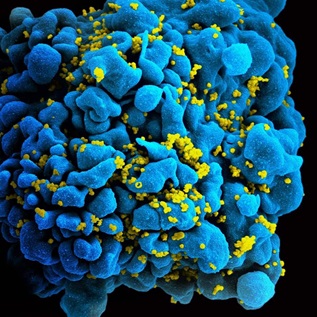Harvest on the Horizon
Future Uses of Agricultural Biotechnology
QUICK SUMMARY
The report is the first independent effort to catalogue selected current research and development efforts in agricultural biotechnology. Biotech research is underway on the following: nutrition, food vaccines, environmental clean-up, medical treatments, endangered trees, disease containment and decorative plants and grasses.
The increasing use of modern biotechnology in agriculture has generated significant debate, much of which centers on the rapidly growing use of food crops that have been genetically modified to make them more resistant to pests or chemical herbicides. As a result, the debate has not usually addressed the potential products of agricultural biotechnology that are on the horizon. While technology developers believe that these new products will offer benefits in meeting needs for food, fuel and fiber, as well as for novel industrial and pharmaceutical uses, some of these future products are also likely to raise environmental and other concerns that will need to be addressed by the regulatory system.
Harvest on the Horizon: Future Uses of Agricultural Biotechnology is intended to enrich both the knowledge and dialogue surrounding agricultural biotechnology by profiling some of the genetically engineered products being developed by industry and university scientists. The report reviews some of the current research on largescale crops like corn and soybeans, but it also outlines ongoing research on a much broader range of plants, trees, grasses, animals, insects and fish. While not a comprehensive inventory, Harvest on the Horizon reveals the breadth and scope of current research activities and gives a snapshot of how industry and university researchers are thinking about potential future agricultural biotechnology products.
The report should not be viewed as an endorsement of biotechnology or any of the potential future applications discussed. Indeed, many of the applications noted in the report are likely to generate strong public debate over their relative risks and benefits. The report deliberately does not address these policy issues in order to provide a clear picture of the breadth of current agricultural biotechnology research and development efforts, an understanding of which is also critical to the public debate.
Nor should the report be construed as a forecast of which products will be successful and brought to market. Much of the research cited is at an early stage, and many of the applications face significant technical, economic, marketing and regulatory challenges before they can be commercialized. This report does not attempt to delve into those challenges. Instead, Harvest on the Horizon simply focuses on the research underway to use agricultural biotechnology to create new products. By demonstrating what could be the "next generation" of products created from agricultural biotechnology, the Pew Initiative on Food and Biotechnology hopes to facilitate and enhance the ongoing public debate about this technology.
The Pew Initiative on Food and Biotechnology is a nonprofit, nonpartisan research project whose goal is to inform the public and policymakers on issues about genetically modified food and agricultural biotechnology, including its importance, as well as concerns about it and its regulation. It is funded by a grant from The Pew Charitable Trusts to the University of Richmond.
REPORT
THE CONTEXT OF BIOTECHNOLOGY
While biotechnology falls within the tradition of improving crops and livestock to better meet human needs, it also greatly expands the ability to move genes within and across species and creates a new ability to move genes across distantly related species and biologic kingdoms. It is this attribute of biotechnology that makes it a potentially powerful tool for modifying nature but which also raises ethical, health, and environmental issues.
While the public is not widely knowledgeable about biotechnology and genetically modified food, consumer awareness appears to be growing. When the Pew Initiative on Food and Biotechnology compared the findings of two polls, respectively conducted in January 2001 and June 2001, it found consumer awareness of genetically modified foods sold in grocery stores had increased by 11 percent between the polls. At the same time, use of the technology is also increasing in American fields, with farmers planting more genetically modified soybeans and cotton this year, according to a recent U.S. Department of Agriculture survey. The government's report also notes that currently 68 percent of soybean acreage, 69 percent of all cotton acreage, and 26 percent of total corn acreage planted is genetically modified.
FOOD CROPS
MAKING FOOD PRODUCTION EASIER
To date, much of the focus of industry research has been on the development of products to reduce crop losses to pests and disease while maintaining yields. The first applications of biotechnology, now on the market for several years, include
staple crops such as corn and cotton that are bioengineered to make toxins capable of killing insect pests. Other crops such as squash, potatoes, wheat, papaya and raspberries, engineered to resist common plant diseases, have recently become commercially available or may soon reach the market. Genetically modified soybeans, corn, canola and cotton have been developed with resistance to the herbicide glyphosate and are widely used in the United States. Scientists are continuing to work on other methods to directly improve crop yields and on ways to help crops grow in difficult environments such as those that have limited water supplies or soils that lack nutrients.
FOOD QUALITY AND NUTRITION
Improving crop yields and reducing crop losses to pests are important to farmers, but they do not necessarily deliver obvious benefits to consumers. Biotechnology research is proceeding on ways to develop products with direct benefits to consumers, such as improved food quality and nutrition. In particular, scientists are using biotechnology to add nutrients to foods traditionally lacking in those nutrients. For example, research is ongoing on ways to add vitamin A to rice, a staple part of the diet in developing countries, to increase the nutritional quality of diets in these regions. Similar research is being undertaken to add vitamin E, an anti-oxidant thought to prevent cancer, to vegetable oils; to reduce the harmful saturated fats of cooking oils; to increase protein quality in vegetable staples; and to reduce the allergenic properties of milk, wheat, and other products to make them available to those who are ordinarily sensitive to them. The report does not address the likelihood that these products will be as beneficial as some proponents believe, an issue of current policy debate.
TREES, TURF AND DECORATIVE PLANTS
The applications of biotechnology in agriculture are not limited to food and feed crops: some research on forestry and trees is currently underway. Researchers are exploring ways to make trees grow more quickly and to be more disease and stress resistant. For example, scientists are working on changing the amount of a tree's lignin—a substance that helps provide rigidity. Reducing lignin could improve the ease and efficiency of processing trees into paper. Alternatively, increasing lignin content could be desirable for lumber and could possibly provide advantages for energy production when wood is used as fuel. Again, the report does not discuss any of the ethical and environmental issues that have been raised about some potential applications of this research.
Genetic engineering is also being applied to the recovery of tree species threatened by disease. The American chestnut is a hardwood tree formerly common in Appalachia and the East Coast that was destroyed by a blight that killed 3.5 billion
trees—all during the first 40 years of the 20th century. The discovery of genes responsible for resistance to the fungus in a few surviving trees may make it possible to develop resistance in genetically modified American chestnut trees.
Turf commonly found on golf courses and also used in commercial landscaping requires enormous quantities of water, herbicides and pesticides to preserve its appearance and functional quality. Industry researchers are working to genetically engineer grass to resist herbicides that may allow for better weed control. In the more aesthetic arena, researchers are looking to engineer flowers and potted plants to have different shades of color and intensity than would normally be found in nature, and are investigating ways to change their size and shape (e.g. dwarf plants). Biotechnology techniques may also be able to extend the shelf life of cut flowers.
BIOTECH INDUSTRIAL PRODUCTS, PHARMACEUTICALS AND ENVIRONMENTAL CLEAN-UP
Researchers are using biotechnology to modify plants to produce industrial products and pharmaceuticals. Examples of products currently under development include: proteins and enzymes for diagnostic, therapeutic and manufacturing purposes; modified fatty acids and oils for paints and manufacturing; biopolymers as substitutes for plastics; and specialty substances. One potential product that is currently being explored is the creation of fibers for clothing and other materials.
Using bacteria engineered to make polymers that closely resemble natural fibers (such as silk, elastin, collagen and keratin), it may be possible to produce unique fibers similar to some of the most popular textiles used in the production of the latest fashions.
Plants and animals can also be modified to act as biosensors, detecting or monitoring hazardous materials in the environment. For example, researchers have modified bacteria to be sensitive to TNT, an ingredient in many explosives, making it potentially useful in tasks like landmine detection. Researchers are also working to engineer zebra fish to act as biosensors for pollutants such as dioxin or PCBs.
Scientists are working on ways to use biotechnology for environmental preservation and remediation. For example, scientists are working with a number of plant species to enhance their natural ability to absorb and store toxic and hazardous substances that could assist in the cleanup of oil spills and chemical leaks.
Scientists have found that genetically modified plants can produce vaccines for human and animal illnesses ranging from colon cancer to traveler's diarrhea to tooth decay. Technology developers believe that using foods to deliver vaccines could have the benefit of permitting the vaccine to be consumed directly by humans or animals as food or feed, and eliminating the need for purification of the vaccine strain and the hazards associated with injections. Some of the plants used to develop the vaccines include corn, spinach, tobacco, lettuce, tomato, soybeans and potatoes. Plants may also be used to produce medical compounds for use in humans, such as monoclonal antibodies, hormones, or blood proteins.
ANIMALS
In addition to research on plants that can produce human medical treatments, scientists are also investigating ways to bioengineer animals to produce human medical treatments for disorders or diseases such as cystic fibrosis. There are efforts underway to modify sheep to be able to produce fibrinogen, a major component in blood clotting that may be used for wound treatment. Scientists are also using genetic engineering to try to use animal tissue and organs for transplantation into humans. But with biotechnology, researchers may be able to genetically modify pigs to suppress a natural protein that causes the animal's tissue or organs to be rejected in humans. Harvest on the Horizon does not address any of the animal welfare, ethical or other policy issues that have been raised with respect to biotechnology research on animals.
Another area of animal research is the production of spider silk from genetically modified goats. Spider silk, an ultra-strong material that can be used in a variety of industrial products, including sutures and bulletproof vests, is difficult to cultivate commercially. Industry researchers are now able to produce spider silk by harvesting protein from the milk of goats engineered with a spider gene.
FISH AND AQUATIC ORGANISMS
According to the UN's Food and Agriculture Organization (FAO), close to 100 billion tons of fish are annually consumed worldwide. It is, therefore, not surprising that researchers have focused on using biotechnology to increase yields for the production of salmon and other fish. For example, the U.S. Food and Drug Administration (FDA) is currently reviewing an application for a genetically modified salmon that grows at three to five times the rate of its unmodified counterpart. At least nine species of fish—none of which are commercially available yet—have been genetically modified for enhanced growth including: the common carp, Crucian carp, channel catfish, loach, tilapia, pike, rainbow trout, Atlantic salmon, Pacific salmon and Sockeye salmon. The possible ecological issues raised by the unintended introduction of a genetically modified fish into the environment are beyond the scope of this report.
Because diseases can spread rapidly in aquaculture with potentially devastating economic consequences, scientists are investigating techniques to protect fish and seafood from such diseases by improving disease resistance. In addition, by modifying salmon for tolerance to sub-freezing temperatures, the geographic range where caged salmon could be farmed could be extended.
INSECTS
Looking at efforts to control insect devastation, researchers are investigating alternatives to chemical pesticides. Scientists are modifying insects to make them more effective predators of unwanted insects, less virulent pests themselves, or to make them unable to carry diseases that are harmful to humans.
One area of research has centered on reducing the ability of mosquitoes to spread disease, such as malaria. The ability to make mosquitoes resistant to the malaria parasites they host could reduce the insects' ability to transmit devastating diseases in places like Africa and other developing countries where some 300 to 500 million cases of the disease occur each year.
CONCLUSION
Biotechnology is a tool. It does not provide the only approach to addressing a particular set of problems, and other approaches or applications may offer better solutions for particular needs. The report does not attempt to weigh the costs and benefits of any particular biotechnology approach or to compare the relative merits of potential alternatives.
Current biotechnology research is addressing a wide range of possible future uses, from enhancing the nutritional value of food and increasing food supply to controlling or preventing disease in humans and animals. While some applications are already on the market and widely used, others are a decade or more away. Whether today's research projects become tomorrow's products depends not only on continued scientific progress, but also on addressing concerns about environmental impacts and other risks, meeting regulatory requirements, and dealing with marketplace realities. In that context, understanding the potential uses of this technology is one critical part of the process by which the public's decisions about biotechnology products will be made.











